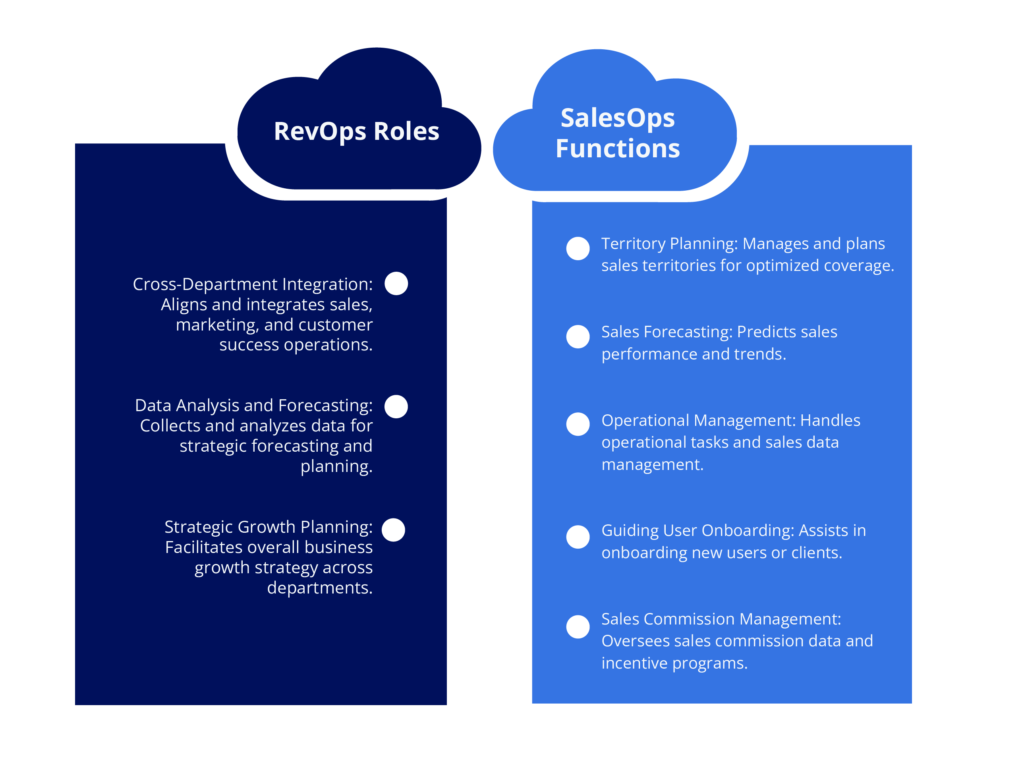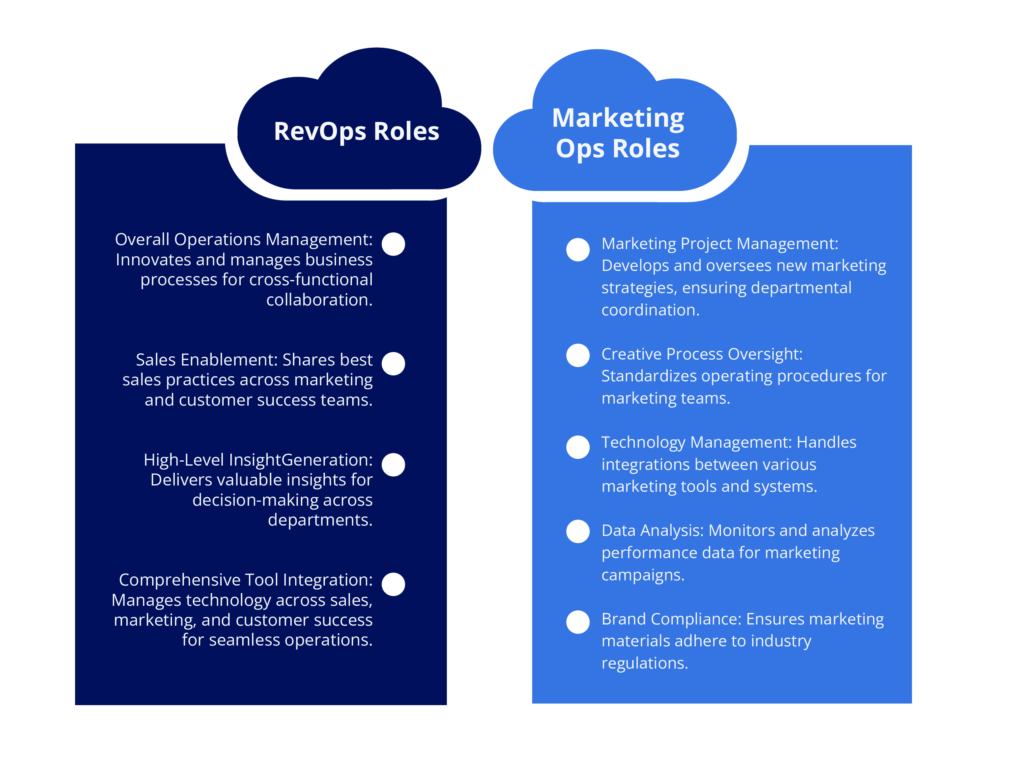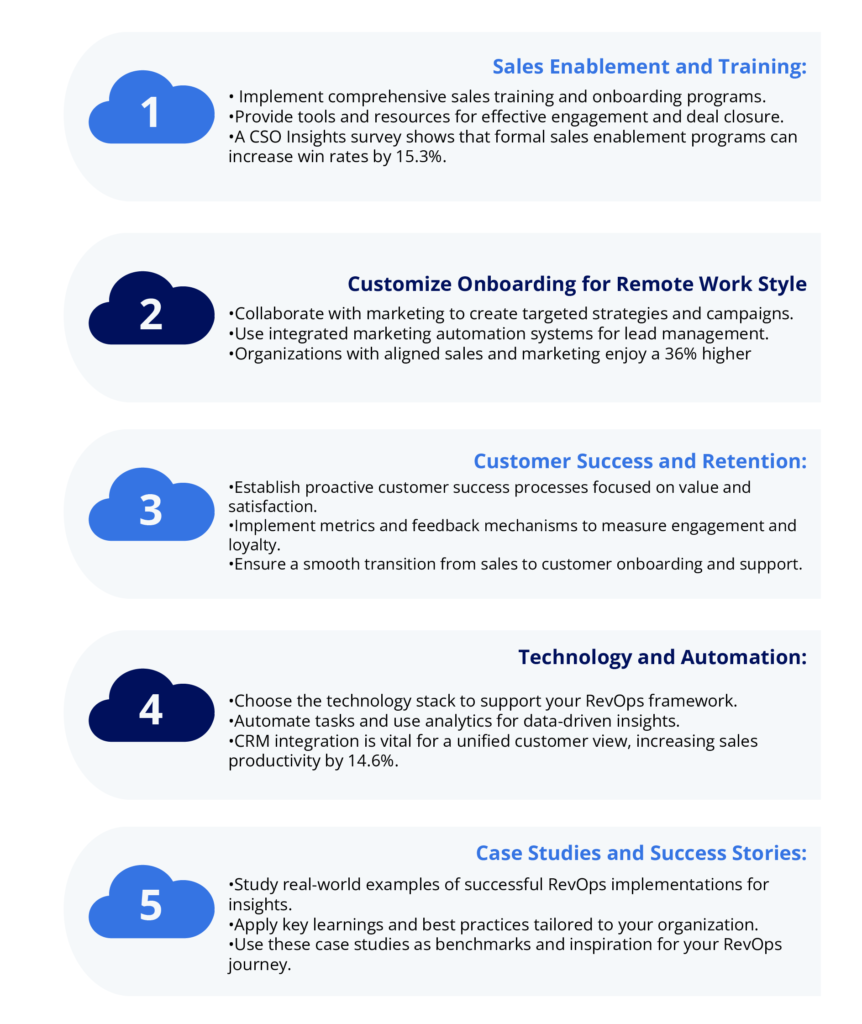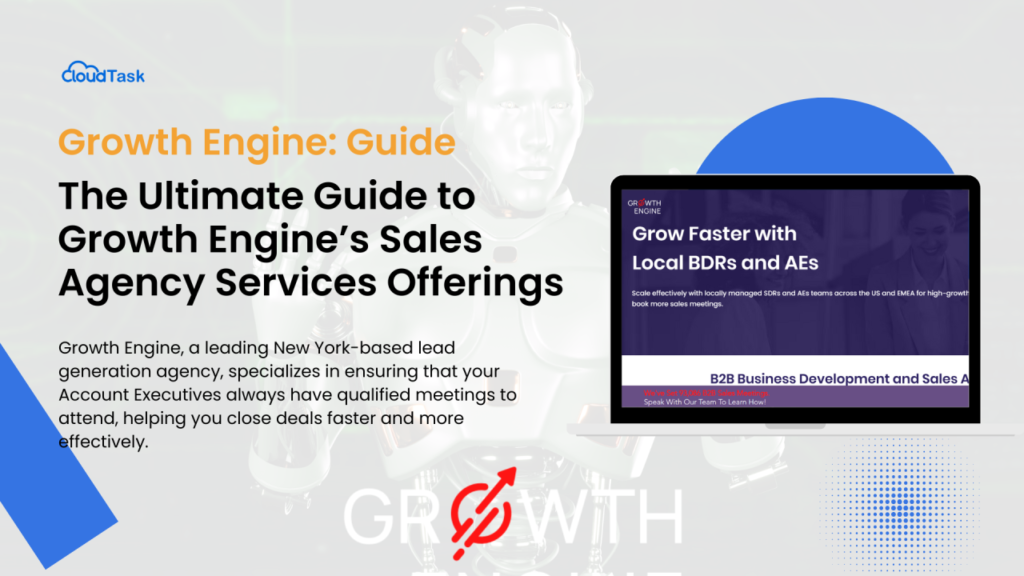Revenue Operations (RevOps) is a framework that can help companies to increase their agility and efficiency.
According to a 2019 study by Sirius Decisions, companies that adopted a Revenue Operations framework experienced a significant increase in revenue, with S&P500 companies seeing a 19.5% increase, compared to only 7.3% for those that did not.
Revenue Operations not only help drive revenue growth but also have a positive impact on a company’s stock performance.
Companies that have aligned their revenue engines have seen 19% faster growth and 15% higher profitability. By streamlining processes, breaking down silos, and using data-driven insights, this framework can improve every aspect of the customer journey, from acquisition to retention.
This blog post will delve into the concept of Revenue Operations in detail and explore how effectively implementing this framework can lead to maximum revenue growth for your business.
The Emergence and Importance of RevOps
Revenue Operations signify a significant change in how businesses operate.
It involves merging the essential components of sales, marketing, and customer success to develop a unified, cross-functional approach.
Revenue Operations are not just limited to boosting revenue streams; they also involve a comprehensive enhancement of business operations. The impact of this business approach is far-reaching across various industries.
Some of the significant benefits of Revenue Operations in different industries include:
Manufacturing:
- Integration with traditional operations for streamlined customer experiences.
- Enhanced order processing, automation, and cost reduction.
- Utilization of data analytics for optimizing design-to-delivery processes.
- Improved marketing strategies and customer journeys.
- Enhanced collaboration across sales, marketing, customer service, and finance.
Financial Services:
- Adoption of RevOps to remain competitive against emerging FinTech companies.
- Critical real-time data collection and analysis for continual process refinement.
- Integration of CRM tools, financial analysis, and forecasting for tighter revenue management and accurate future projections.
Software Companies (including SaaS):
- Recognition of the importance of cross-departmental collaboration for maximizing returns.
- Substantial improvements in digital marketing ROI, sales productivity, lead acceptance, internal customer satisfaction, and reduced go-to-market expenses have been reported.
- Focus on maintaining growth, profitability, and scalability while providing exceptional service.
Core Components of Revenue Operations
Revenue Operations is a modern approach that helps businesses enhance their revenue-generating strategies.
It strategically integrates the sales, marketing, and customer success departments to break departmental barriers, improve revenue forecasting accuracy, and maximize revenue potential.
Revenue Operations are beneficial for both B2B and B2C contexts as they align departmental teams and create a unified framework for data sharing, enhancing understanding, and collaboration across departments.
The key components that make up Revenue Operations are:
- Process Integration: Revenue Operations involve integrating sales, marketing, and customer success processes to create a seamless customer journey. This integration ensures that all teams are aligned to attract, engage, and retain customers.
- Data Integration: Centralizing and integrating data from different departments and systems is crucial for RevOps’ success. It enables teams to have a comprehensive view of customers, identify patterns and trends, and make data-driven decisions.
- Technology Enablement: Leveraging technology solutions such as CRM platforms, marketing automation tools, and analytics software is crucial for implementing RevOps. These tools help teams streamline processes, automate tasks, and gain actionable insights.
- Metrics and KPIs: It is crucial to define and track key performance indicators (KPIs) and metrics to measure the success of a RevOps strategy. These metrics should align with revenue goals and provide visibility into the effectiveness of sales, marketing, and customer success efforts.
- Collaboration and Communication: Collaboration and communication are essential for RevOps teams to achieve revenue objectives. Regular meetings and open communication channels are necessary for success.
RevOps vs. Sales Ops
RevOps and SalesOps are both vital for a company’s growth, but they serve different functions.
RevOps is an approach that unifies several departments of a business to promote overall growth. On the other hand, SalesOps is focused solely on the sales aspect of a company.
RevOps brings a comprehensive approach that integrates the efforts of SalesOps, Marketing, and Customer Success. This integration facilitates the targeting of sales efforts by SalesOps, making them more effective.
In contrast, RevOps plays a key role in data collection and analysis for forecasting and planning.
Here’s a comparison of the roles and responsibilities of both business operations:

RevOps vs. Marketing Ops
Revenue Operations (RevOps) and Marketing Operations (Marketing Ops) play a crucial role in a company’s revenue stream, but they focus on different aspects of the business.
RevOps takes a comprehensive approach, optimizing efficiency and performance across the entire go-to-market strategy, including sales, marketing, and customer success.
On the other hand, Marketing Ops concentrates solely on the marketing department, managing processes and systems to streamline marketing activities and ensure consistency throughout the marketing funnel.
To sum up, here are the main differences between them:

Challenges Addressed by Revenue Operations:
The rise of Revenue Operations has significantly changed how businesses overcome the challenges presented by traditional organizational structures.
These structures often result in departments working in isolation, resulting in slow decision-making and inefficient processes.
However, as businesses realize that this old way of doing things is no longer viable in today’s competitive environment, Revenue Operations have emerged as the solution to transform these disjointed parts into a cohesive and efficiently operating unit.
Here are the key challenges that RevOps addresses:
- Siloed Departments and Inefficient Information Flow: Traditional structures often led to information bottlenecks, with departments working in isolation. Implement standardized processes across departments and automate tasks to improve efficiency and collaboration.
- Outdated and Inefficient Processes: Streamlining and updating processes to eliminate bottlenecks, accelerate decision-making, and foster better interdepartmental cooperation.
- Ineffective Team Alignment and Collaboration: Breaking down silos between departments and aligning teams towards common goals, using techniques like scorecards and leaderboards, and investing in collaborative technology platforms.
- Inaccurate and Inconsistent Data: Cleaning and consolidating organizational data for accuracy and consistency, enabling fact-based decision-making, leading to improved operational efficiencies and revenue growth.
- Underutilization of Technology and Tools: Integrating and optimizing the use of various martech tools to ensure they work together effectively, enhancing overall performance.
Benefits of Implementing a Revenue Operations Framework
The adoption of Revenue Operations can bring several advantages that align with the changing consumer behaviors and modern business operations.
According to Super Office, more than 67% of consumers now prefer to independently navigate the sales cycle, highlighting the need for a more integrated approach to sales.
Here are the primary benefits of implementing RevOps:
- Enhanced Interdepartmental Alignment: RevOps aligns sales, marketing, and customer success teams towards shared revenue goals, streamlining efforts and enhancing business efficiency.
- Improved Customer Experience: RevOps ensures a seamless, personalized customer journey by integrating data and processes across departments. This approach leads to increased customer satisfaction, loyalty, and revenue growth.
- Data-driven decision-making: RevOps centralizes data from various sources to empower informed strategic decisions, optimize strategies, and understand market trends and customer preferences.
- Increased Operational Efficiency: RevOps simplifies operations by automating tasks and eliminating redundancies, freeing teams to concentrate on strategic, revenue-generating activities, and increasing productivity and impact.
- Scalability and Sustainable Growth: The RevOps framework enables businesses to grow efficiently by aligning teams and processes to maintain operational effectiveness, making it easy to adapt to market changes.
- Accountability and Performance Measurement: RevOps emphasizes measurable outcomes and KPIs, fostering a culture of accountability. Teams can better track and understand their contribution to revenue goals, leading to continuous performance improvement.
- Cost Efficiency and Tool Optimization: RevOps promotes consolidating tools and processes, reducing costs and confusion. This approach optimizes resources, streamlines operations, and saves expenses.
How to Implement Revenue Operations in Your Business Organization
Implementing a Revenue Operations framework is essential for bringing together your sales, marketing, and customer success teams.
This alignment is necessary to improve revenue generation, increase efficiency, and foster growth.
Here are steps to successfully integrate this framework into your business:

Final Thoughts
Revenue Operations have become a crucial pivot in business operations, providing an opportunity to integrate and optimize sales, marketing, and customer success.
It has proven to be a vital asset for businesses striving for efficiency and revenue growth, and its profound effects on revenue growth, customer experience, and operational efficiency cannot be overstated.
To successfully execute a Revenue Operations strategy, it is critical to have the right talent on board.
This is where CloudTask Marketplace comes in handy.
CloudTask offers access to 500+ remote job candidates, each with a video profile, work experience, and transparent monthly rates.
We simplify the hiring process and make it simple to find experienced professionals like Sales Development Representatives, Account Executives, Customer Success Representatives, and Sales Managers.








